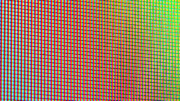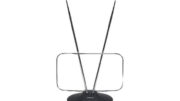Antenna color codes are broken into six different zones. These zones identify the different types of antennas that are required for a consumer to receive optimal reception. Typically, the closer consumers live to the signal tower, the better reception they will receive. They may also be able to use an indoor antenna versus an outdoor. The farther away a consumer lives, the opposite is true. However, there are many variables that impact exactly which antenna a consumer will need.Not sure which TV Antenna to purchase for your location?
Let us help you choose!
Complete our TV Antenna Site Survey to get started. Then, take a look at these color codes. You’ll find similar ones on many antennas.
Small Multi-Directional TV Antenna

Description:The smallest of TV antennas, they receive equally well from all directions.
Appearance:Good looking designs including novel shaped disk and patch antennas, and antennas that attach to satellite systems.
Use:In yellow color code areas where signal strength is highest and away from reflecting structures or low areas.
Medium Multi-Directional TV Antenna
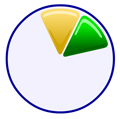 Description:Somewhat larger and slightly more powerful.
Description:Somewhat larger and slightly more powerful.
Appearance:These antennas include novel stick, wing shaped or disk antennas with long elements.
Use: Green color code areas. An amplified antenna is recommended in the green area anytime a long (20 feet or more) cable run from the antenna is required, or when more than one antenna is used.. They work best away from reflecting structures or low areas.
Large Multi-Directional TV Antenna
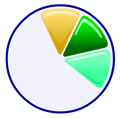 Description:Bigger in size, these antennas receive more signal power. Better for greater distances from signal source and areas with low signal strength.
Description:Bigger in size, these antennas receive more signal power. Better for greater distances from signal source and areas with low signal strength.
Appearance:Styles include element antennas. These antennas can be used to reject simple ghost situations.
Use:When mounted at rooftop heights (30 feet or higher) outdoors, amplified antennas can be used in light green color code areas away from reflecting structures or low areas.
Small Directional TV Antenna with Pre-Amp
 Description:Antennas that act like large multidirectional on channels 2-6 but on higher channels these antennas start to have useful ghost reducing effects. Picture quality is excellent when no signal reflecting structures are around.
Description:Antennas that act like large multidirectional on channels 2-6 but on higher channels these antennas start to have useful ghost reducing effects. Picture quality is excellent when no signal reflecting structures are around.
Appearance:Multi-element rooftop antennas.
Use:Suitable for far edge of light green color code areas. Amplified antennas with rooftop mounting can be used in these areas if the area is free of signal reflecting structures and is not in a low area.
Medium Directional TV Antenna
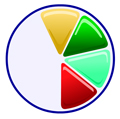 Description:Most popular rooftop antenna because of its modest size and ghost reducing characteristics.
Description:Most popular rooftop antenna because of its modest size and ghost reducing characteristics.
Appearance:Multi-element rooftop antennas.
Use:If there are ghost producing reflective structures near TV receiver antenna location, this kind of antenna is best for yellow, green, light green and red color code areas. Amplified antennas with rooftop mounting can be used with the blue color code.
Medium Directional TV Antenna with Pre-Amp
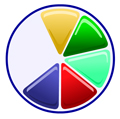 Description:Most popular rooftop antenna because of its modest size and ghost reducing characteristics. To be used with pre-amplifier.
Description:Most popular rooftop antenna because of its modest size and ghost reducing characteristics. To be used with pre-amplifier.
Appearance:Multi-element rooftop antennas.
Use:If there are ghost producing reflective structures near TV receiver antenna location, this kind of antenna is best for yellow, green, light green and red color code areas. Amplified antennas with rooftop mounting can be used with the blue color code.
Large Directional TV Antenna with Pre-Amp
 Description:Large antennas used in weak signal areas for maximum possible TV reception.
Description:Large antennas used in weak signal areas for maximum possible TV reception.
Appearance:Multi-element rooftop antennas.
Use:Can be used in any color code area, but requires an amplifier and roof mounting for blue, violet and red color codes. Amplifiers are not recommended for yellow color codes.
When purchasing an antenna, look for the CEA-certified antenna mark for outdoor antennas (which corresponds to the colors on your stations list). There is also a CEA-certified indoor antenna mark, which does not apply to this mapping system, but certifies that your indoor antenna will work in geographic areas that are appropriate for indoor antennas.
Not sure which TV Antenna to purchase for your location?
Let us help you choose! Complete our TV Antenna Site Survey to get started.



